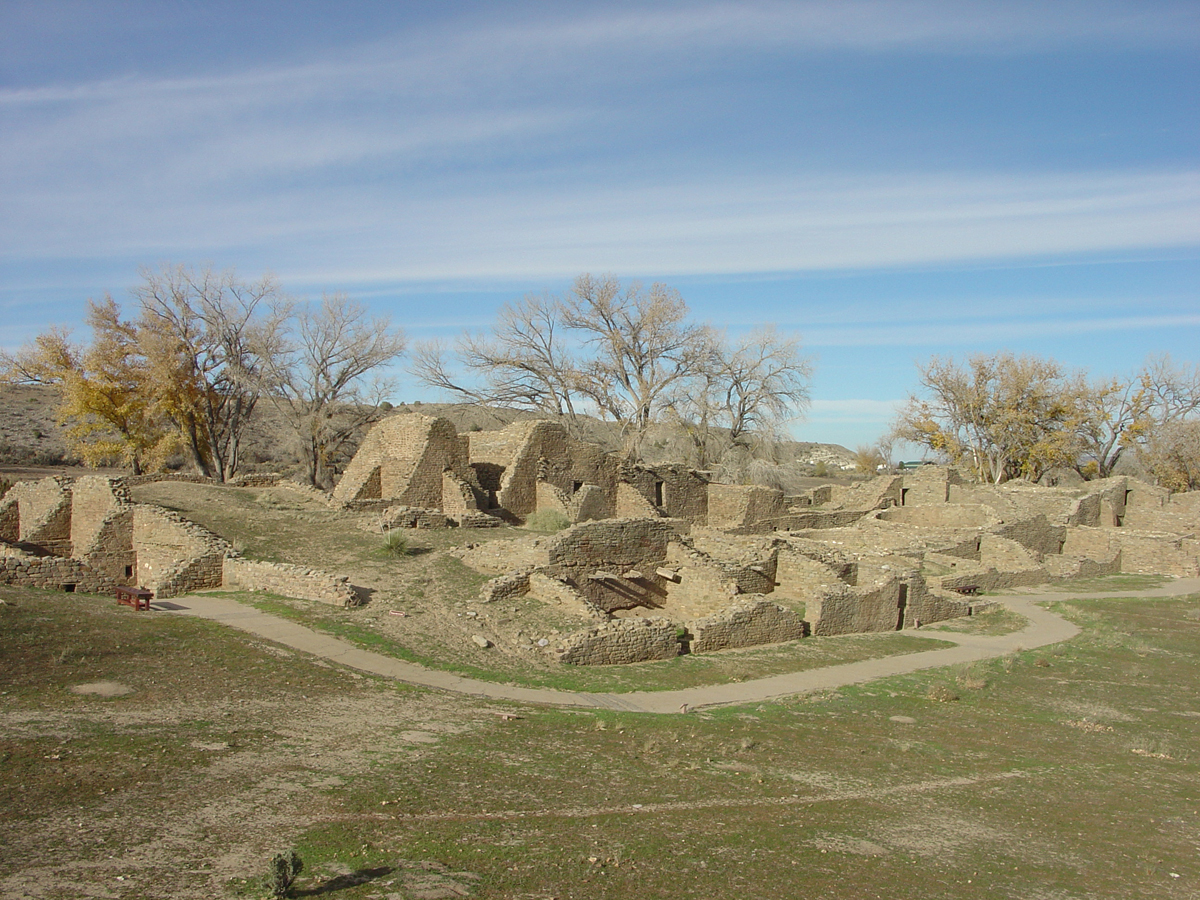
 |
| Aztec Ruins National Monument is a preserve of a prehistoric community that evolved over time in the Animas River valley in northwestern New Mexico. The community shared many of the characteristics of the nearby Puebloan communities centered in Chaco Canyon (about 65 miles to the south) and the Mesa Verde area (about 50 miles to the north). Many lines of evidence show that the pre-Columbian community at Aztec Ruins was a Chacoan outlier settlement (Cajete and Nichols, 2004) [also see NPS brochures on ceramic materials and trade materials]. The puebloan-style construction in the park area includes two large ruin complexes, Aztec East and Aztec West, with additional dwelling sites in the vicinity. Tree-ring dating methods (dendrochronology) were used to resolve detail of the construction of the great houses at Aztec Ruins. The larger Aztec West ruin complex (partially shown here) was constructed between A.D. 1110 and 1125 (NPS, 1962). Aztec East was constructed after A.D. 1115. However, dates based on tree-ring studies (dendrochronology) of the Aztec East ruin suggest that most construction took place in the 13th century (Benson and others, 2003). As described in a 1931 journal article, Aztec West pueblo ruin was constructed in a large E-shape and had approximately 500 rooms. In addition, in 1931 the first floor of the structure was still standing, and 24 of the rooms still had original ceilings intact, and some parts of second and third story rooms remained standing (Anonymous, 1931). |